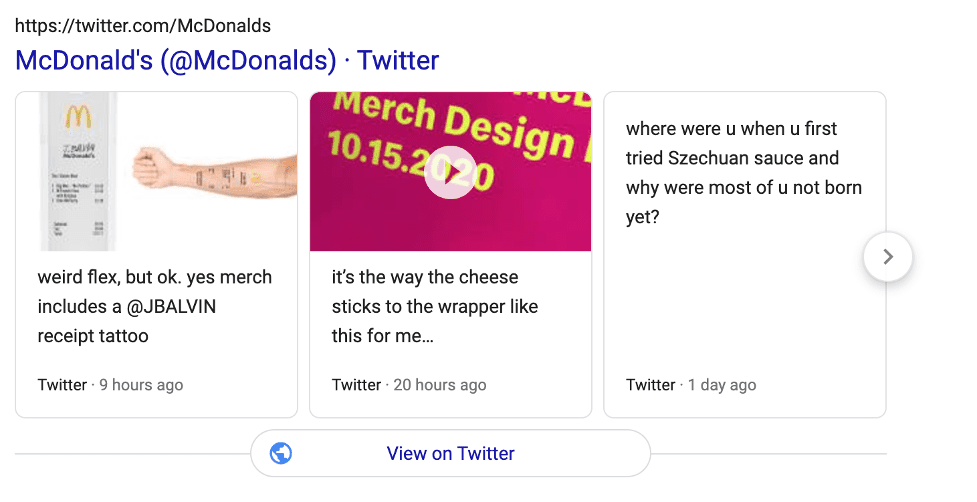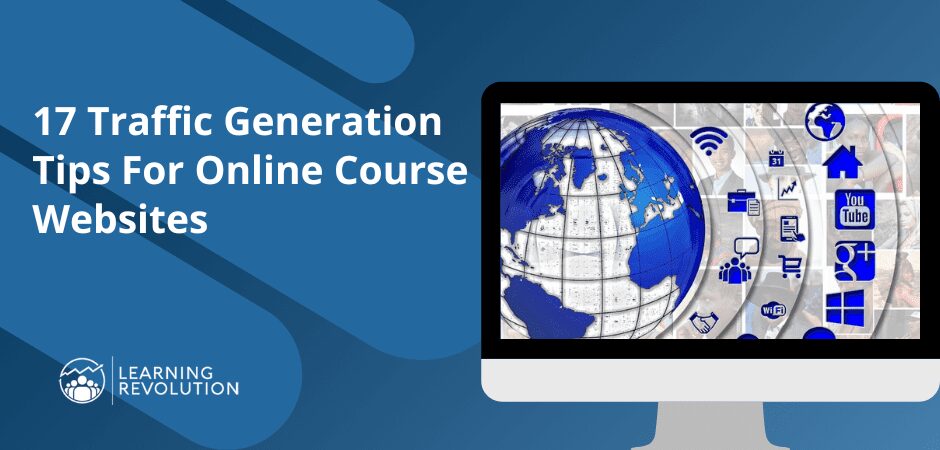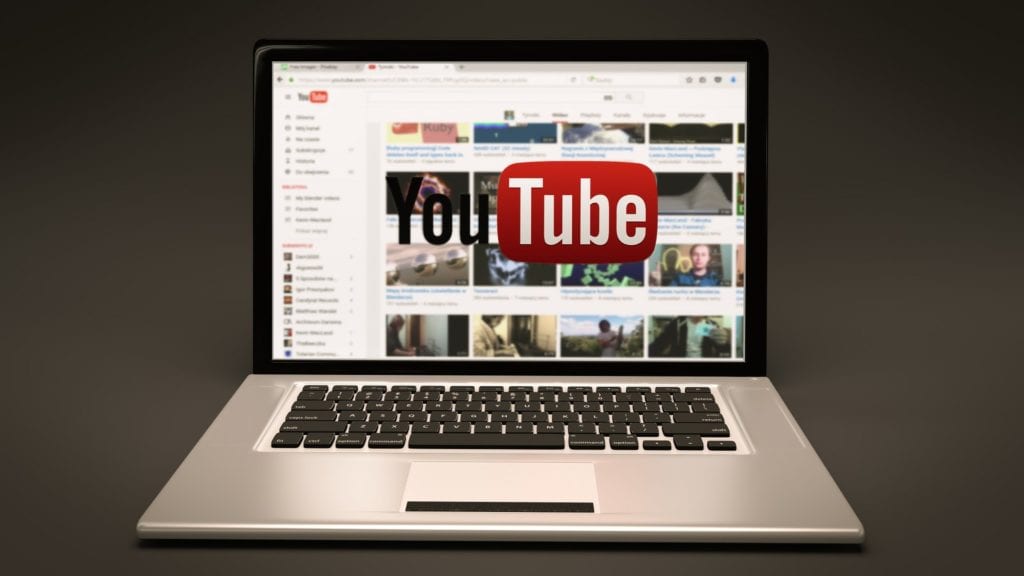

Are you ignoring social media SEO?
When creating a content marketing strategy, Search Engine Optimization (SEO) usually plays a significant role in attracting visitors to your site. SEO strategy can be as simple or complicated as you make it, but the ultimate goal of all SEO activity is to make your site clear and comprehensible to search engines in order to raise your ranking on Search Engine Results Pages (SERPs).
Most people understand the basics of SEO as it relates to their blog or website, but following good SEO practice is much harder on sites where you can’t access the metadata or formatting tools. However that doesn’t mean SEO is impossible on social media, and search engines do crawl social content to produce results, so tailoring your profiles and posts for SEO can give you an edge over the competition.
Here’s how to do it on the major social media platforms.
SEO for Facebook
Facebook is one of the most important sites you can use to improve your social media SEO because it is readily indexed by search engines and gives the user some control over their meta descriptions and snippets. Unlike personal pages, Facebook business pages are designed to be public, so if you haven’t set up or optimized your Facebook page, it’s time to get started.
Choose the right page name
The first word in your Facebook business page name is the most important when it comes to SEO, so make it count. Your name needs to be recognizable as your brand, short enough to be memorable for users, and ideally contain a keyword or two that helps search engines index the page correctly.
Avoid stuffing your name with keywords — too many makes the page look like spam, and could get it shut down. It’s also harder to incentivize other Facebook users to tag your page in a post if the name is too long. Remember that wherever the page is tagged, the full name will be inserted, and the post needs to remain readable. “I’m learning French with @Joe Smith Language School” retains its legibility, whereas “I’m learning French with @Joe Smith Best Language School French Teaching Learning Ecourse Online Course” does not.
Making your page name too generic is another pitfall to avoid. Your social media accounts should be instantly recognizable as part of your brand and specific to you. Simply calling your page “Language School” might seem like a great idea, but generic pages will attract a very generic audience, making it harder to convert social followers into paid learners.
Claim your vanity URL
A vanity or custom URL gives you the opportunity to choose your Facebook web address. From an SEO perspective, the URL provides a critical boost when it comes to branding your business. Aim to keep it short and memorable, and clearly branded to your business. Your business name is best, and add a keyword to distinguish your brand if the name has already been taken.
Once you’ve chosen your page name and URL, avoid the temptation to change them unless it’s truly necessary. Name recognition is critical to your social profiles becoming recognizable to fans and other users, as well as for search engines to associate them with your brand.
Add a meta description
Facebook is a great platform to boost your SEO because the site data is coded to correspond with common metadata settings. On your website, you can edit your meta description, and that text will appear beneath your URL on SERPs.


When you create a Facebook page, the copy you write in the About section becomes your meta description. Specifically, the first 130 characters of the About section are the most important, because this is the size of the meta description preview on mobile browsers.
For status updates, the first 18 characters serve as the meta description. That’s pretty small, about nine words, so always make sure your opening sentence has a solid hook that grabs attention and includes some all-important keywords in order to maximize your SEO. When it comes to Facebook, you need to make your first line count.
Don’t overlook local SEO
Some edupreneurs conduct their business entirely online through courses and remote seminars, but if you teach at a specific location, be sure to utilize Facebook’s location settings in order to boost your local SEO — the information search engines use to answer location-based questions such as “find language schools near me.”
Adding location information to your Facebook business page, including an address, contact information, operating hours and more, will give your business a huge boost in search engine results for location-based searches, particularly on Google, as Google Local draws information from Facebook business pages. You can also link your Facebook page to Google My Business for even more accurate search engine results.
Use inbound and outbound links


One of the primary factors affecting SERPs is authority — i.e. how popular and reputable domains are in comparison to the domains they link to, and that link to them. Wikipedia or Amazon are examples of very high authority domains, with large user bases and a high degree of trustworthiness. Each site probably has millions of inbound links from domains with much lower authority — every blog post citing Wikipedia as a source, every affiliate link directed toward a product from Amazon, and so on — with each individual link only having a negligible impact on the overall domain authority. However if Amazon or Wikipedia links out to another, smaller site, that site gets a boost in SERPs because its authority is elevated by the incoming link.
Domain authority is a complex calculation of how many visitors a site gets, the quality of the content it provides, its age, speed, and more, but typically sites with many users are considered high authority. That means that links from Facebook to your website can boost your domain authority, and reciprocal links from your site back to your Facebook page further cement the association between the two, strengthening your online branding. It isn’t a magic bullet — social media sites have so many users, posting so many links, that search engines don’t give them the same weight that, for example, a Wikipedia source link holds, but cultivating high authority inbound links is always good for SEO.
Caption your images
When you’re adding images to your website, you probably use the file name and alt text to describe the image and provide a small SEO boost. This isn’t an option on Facebook, as all uploads are renamed according to Facebook’s internal filing conventions, so you lose that opportunity. However you can replace this feature — and make your Facebook page more accessible — by captioning your images appropriately.
Providing a description of the image can help you insert vital keywords into your Facebook page in a natural way, enabling search engines to better index the page’s contents. This is especially important for your profile and header pictures (the two images that are most likely to be indexed, but least likely to be captioned).
Add custom tabs, and don’t send visitors to the wall
Social media is exceptionally good at generating social proof, and you should take advantage of that by adding custom tabs to your Facebook page in order to build the features that best suit your business. For edupreneurs, that might include a Videos page, where you can highlight some of your works, a Reviews tab, and a Community page where past and prospective learners can discuss your courses and seminars.
As Facebook has evolved, the “wall” (the default homepage for each page) has become increasingly disorganized, with content grouped into types and displayed according to algorithms rather than in chronological order. This can be confusing to new visitors as it is less intuitive to understand what the page is for and what it offers. Instead, you can create custom tabs and direct new visitors directly to a welcome video, an introduction to your courses, a product page, or anything else.
Remove disused tabs
Just as important as using the right tabs is removing the wrong ones. Keep your Facebook page simple to navigate by removing any tabs that aren’t relevant or don’t attract learners. Review the performance of your page periodically in order to understand how visitors are using it, and what information they value the most. Search engines rank active pages much higher than dormant ones, so try to keep your Facebook page attractive to users.
Use social proof
One tab you should consider adding is the Reviews tab. This enables reviews to be published on your page, and visitors will be prompted to leave their own review. If your Facebook page and Google My Business account are linked, you can even integrate your reviews so anyone who searches for your courses on Google will see all your cumulative reviews, not just those left on Google itself.
Social proof is a powerful form of advertising, and it doesn’t stop with reviews. The number of fans your Facebook page has, and the amount of interaction and engagement it attracts, can also bolster your reputation as an edupreneur.
Claim unofficial pages
It could be that when you go to make a Facebook business page, you find one already exists. Facebook has millions of placeholder pages that people can use to discuss a business or check in, even if the business itself isn’t on Facebook. These pages are pretty harmless if you don’t have a presence on Facebook, but will be confusing to users and cost you engagement if you end up with multiple pages for the same brand.
Fortunately, Facebook allows users to claim these pages and merge them with others, so don’t put up with ghost profiles. An important factor in climbing SERPs rankings is to be the most relevant result to a search query, and duplicate business pages only confuse algorithms and result in your pages being downgraded.
To recap:
- Choose the right page name
- Claim your vanity URL
- Add a meta description
- Don’t overlook local SEO
- Use inbound and outbound links
- Use Facebook Notes
- Captions your images
- Add custom tabs
- Remove disused tabs
- Use social proof
- Claim unofficial pages
By following these simple steps, you’ll give your Facebook business page a major SEO boost that can translate not only into better results for your Facebook page, but for your website, and your Google business data.
SEO for Twitter
While Facebook has gone above and beyond to have their business pages indexed and integrated into Google’s algorithms, Twitter provides less opportunities for edupreneurs to boost their search engine status. However that doesn’t mean Twitter has no value from an SEO perspective. With just a few tweaks, you can maximize your Twitter profile and see the effect reflected on SERPs rankings.
Understand how to use hashtags
One of the most important lessons to take from Twitter is how to tweet effectively. Hashtags were born on Twitter and are still used extensively across the platform, but there is a right and a wrong way of tweeting and tagging. Twitter itself suggests using no more than two hashtags per tweet, but that doesn’t stop some users from filling up their 280 character limit with half a dozen or more.
Think of tweets as a conversation, and each hashtag is a pause between words. It’s really #difficult to #read a #tweet when every other #word is a #hashtag. Hashtags that disrupt the flow of the conversation do more harm than good, and also muddy the waters — some sites might recommend incorporating trending hashtags into otherwise unrelated tweets in order to get more visibility, but that doesn’t appeal to users, and it only confuses computer algorithms that are trying to parse and quantify the content of your account.
Using a couple of relevant hashtags on about half of your tweets is optimal for expanding the tweet’s visibility while preventing your account from looking and acting spammy.
Use emojis (sparingly!)
Emojis are great for expressing yourself in a clear and succinct way, and on a site like Twitter with limited space to tweet, they can be invaluable tools. They also add a splash of color to text-only posts, helping your tweets stand out in the timeline. However, much like hashtags, emojis can break up text and insert unnatural pauses, making it harder to read. Think of emojis as punctuation and stick to using them at the end of sentences or clauses.
Optimize your handle, name, and bio
Search engines generally don’t crawl or index all of Twitter — it’s simply too big, and moves too fast, for every tweet to be relevant to search engines. Instead it’s your URL, name, and bio that are most likely to be indexed and are therefore most valuable from an SEO perspective.
Your name should match or otherwise be easily associated with your brand name in order for search engines to easily associate your account with your other online profiles. Avoid using too many numbers in your handle or username, as this can look spammy. Remember that your handle forms part of your Twitter URL, and including your business or brand name in your URL can boost your SEO.
Twitter gives users 160 characters in their bio, so keep it short and snappy. Include one link, and use a hashtag or two that are most relevant to your subject. The link you include will form your primary backlink, and from a high authority domain like Twitter it’s important to make it count. The homepage of your website is usually the most appropriate link to include, but if you have a specific sales or subscription landing page, consider using that page instead. Always try to make the link one that you own, in order to get the most SEO benefit.
Use media posts
Twitter is overwhelmingly a text-based, conversational app, but media posts (videos, photos, gifs) do exceptionally well on the platform, and this can play a role in whether or not Google indexes your tweets. Twitter encourages users to include media in their posts if they want to increase engagement, with tweets containing photos generating three times the interaction of text-only tweets. While you don’t need a reaction gif for every tweet, if you want to draw attention to a particular message, using an image or video in the tweet is the best way of giving it a boost.
Get on the Google carousel
Google’s Twitter carousel is a powerful feature for displaying your tweets to search engine users. Not every account gets a carousel, but if Google recognizes your Twitter account as belonging to a brand or public-interest personality, there’s a strong chance of seeing your tweets appear on the slider at the top of Google’s SERP.
In order to get a carousel, Google has to understand that your Twitter account is linked to your brand. Optimizing your Twitter URL, name, and profile is vital to associating your account with your business identity, but you also need to have an active account that generates regular engagement. Google’s primary driver is relevance, and an obsolete or inactive account fails the relevance test. Getting on the carousel therefore requires a two-pronged approach, where you optimize your Twitter account to make it easily indexed, and cultivate interested and engaged followers.
Discuss trending topics
A great way to generate engagement is to be topical. Every time you log into Twitter, you’ll see suggestions for topics and hashtags that are currently active. You can adjust these recommendations by location and subject matter in order to tailor them for your account and followers. If you’re trying to build a Twitter following and garner attention for your tweets, addressing topical subjects (where appropriate) is a great way to start.
That doesn’t mean you have to have an opinion on every item in the news — indeed, it might be prudent to avoid hot-button subjects, depending on how you present yourself as an edupreneur, or the subject you teach — but when a trending topic is relevant to your field, don’t hesitate to join the conversation. Popular topical tweets are far more likely to be indexed by search engines, and can elevate the authority of your entire profile as a result.
Share links
As with Facebook and other social media sites, link sharing by users generally isn’t valued highly by search engines precisely because everyone is doing it. However if you share a link on a particularly popular tweet, that can have a positive impact on the URL’s SEO. Every time a link is shared it creates a new backlink, and as they build you can increase your domain authority. One account tweeting the same links over and over has little to no impact on SEO, but if multiple accounts retweet the same link hundreds or thousands of times, your website ranking is much more likely to improve.
To recap:
- Understand how to use hashtags
- Use emojis (sparingly!)
- Optimize your handle, name, and bio
- Use media posts
- Get on the Google carousel
- Discuss trending topics
- Share links
It can be hard to get noticed on Twitter, or to get your Twitter account noticed by search engines. However by optimizing your profile page and cultivating an engaged and active Twitter account, you can give your website and online presence an unexpected SEO boost that delivers real results.
SEO for Instagram
Instagram is more than beautiful people sharing their holiday snaps. Many businesses do well on the platform by showcasing their products, and edupreneurs can also benefit from being on Instagram, and even give their brands an SEO boost as a result. Here’s how to do it.
Optimize your name and handle
As with other social platforms, the content most likely to be indexed by search engines is your name and username, or handle, which also forms your Instagram URL. make sure you’re easily searchable and brand consistently by using your professional or business name as your Instagram username, and try to keep all your handles consistent across social media to increase the likelihood of them being associated with your business in search engine results.
Use keywords in your bio
Instagram gives you 150 characters in your bio, and the hashtags you include are searchable, so make the most of them. Keep your description short, direct, and make sure to use one or two of the most relevant hashtags and keywords relating to your subject and profession. This not only makes your profile more searchable on Instagram, but improves the relevance of all your associated profiles on search engines.
Write descriptive captions
Although primarily a photo sharing site, Instagram has a generous 2200 character caption limit, meaning you have plenty of space to write descriptions for each image you share. This is important to utilize, because search engine crawlers (and Instagram’s AI) primarily use word learning to rank and filter results. A fun caption, such as “How’s your Sunday going?” accompanying a photo of you hard at work creating your next online course, might be amusing to your followers, but doesn’t add any relevance or other SEO benefit to your account. An extra sentence, “I’m hard at work creating my next [subject] online course!” instantly provides valuable keywords.
Use alt text on your images
Just like with your website, alt text tags make your Instagram account more accessible to people who are visually impaired, and also provide space for you to add relevant keywords that might otherwise look out of place in a caption. It’s important not to keyword stuff, but to describe your image accurately and concisely. “Joe Smith learn French speak languages online course” might include a flurry of keywords, but doesn’t describe the image. “Bestselling French language instructor Joe Smith creating content for his new online course” is both descriptive and keyword-rich. There’s a 100-character limit on each alt text tag, which is more than enough to improve your SEO (for reference, my second example is 91 characters long).
Use your link well
Every user gets one link on Instagram, and it’s important to use yours well. It’s common for users to take advantage of a service such as Linktree or ContactInBio to circumvent this rule. You create a profile on a linking service and put that link into your Instagram account. From there you can display multiple links, from newsletter signups to your website and course buy pages.
While link services seem like a great idea, they do detract from your SEO. Instagram is a high-authority domain, so an inbound link to your website from your profile page is far more valuable than an inbound link from a third-party linking service. Rather than relying on one of these sites, if you want to create a link landing page, do so on your website and use the direct link to that page on your Instagram profile. That way, you keep the SEO-friendly inbound link and retain control over the look, feel, content, and cost of your link page.
Add links to your Stories
There is one other place that (some) Instagram users can add links — to their Stories. In order to unlock this feature, your Instagram account must be verified, or have at least 10,000 followers. While the followers might take a while to amass, you can request verification immediately from the Settings menu, even if you’re not using a personal account.
If you can unlock the feature, using links in your Stories gives you the opportunity to post direct links for important updates, and can improve conversion by eliminating the need for followers to navigate through your profile to find the link they want.
To recap:
- Optimize your name and handle
- Use keywords in your bio
- Write descriptive captions
- Use alt text on your images
- Use your link well
- Add links to your Stories
Instagram might not seem like the most SEO-friendly app on the surface, but it has introduced a number of tools that can help boost your search engine rankings and improve the relevance of all your online profiles.
SEO for Pinterest
Pinterest is often overlooked by entrepreneurs looking to get a foothold in social media, but if your subject matter is visual, it’s a must-use platform. Pinterest results dominate Google Image searches, and Google has a long history of taking its lead from the social media platform when it comes to its image search features. From hosting photographs of finished products for creative arts edupreneurs, to sharing infographics and other visual learning tools, Pinterest is an edupreneur’s dream platform. Here’s how to maximize your profile for the best search engine results.
Optimize your name, handle, and bio
This is the first thing you should do on any platform, but social media sites lure many users into creating anonymous nicknames that aren’t easily associated with their wider brands. Ensure that your name and username match your business name, and use keywords in your bio to make your profile easily searchable by subject. Ideally you should use the same username across all platforms so search engines — and learners! — can find all of your profiles without difficulty.
Claim your website on Pinterest
Business accounts can verify ownership of their websites through Pinterest in order to unlock analytics reports and attach a Follow button to any images pinned from your site. In order to claim your website, follow Pinterest’s instructions to add a HTML tag to the source code. This method works for independently hosted websites, as well as subdomains and subpath domains such as mysite.example.com and example.com/mysite. As with other social media sites, Pinterest is considered a high authority domain, so verifying your website can provide valuable inbound links that elevate your search engine ranking.
Pinterest also offers the option to claim other online profiles and link them to your Pinterest profile. This makes it easier to pin your content from Instagram, YouTube, and Etsty, provides more analytics reports, and attributes existing pins from those profiles to your account.
Publish video pins
While most people think of still images when they think of Pinterest, video is a big deal on the platform, with organic views increasing 240 percent year-on-year. That’s a huge audience that many edupreneurs are overlooking. If you use video content in your online courses, you probably already cut small clips to share on social media that can be pinned or uploaded directly to Pinterest.
If you haven’t got started with video learning yet, now’s the time. It’s never been easier to set up a simple home studio.
Make your boards discoverable
With 322 million users, Pinterest accounts are constantly competing for attention, and in order to maximize your profile’s potential, it has to be found. Use keywords in the titles of your boards, and write detailed descriptions that are designed to attract learners searching for your subject.
The majority of Pinterest users search for their interests by keyword, so it’s important to include them as often as possible in your content to increase its relevance in search results. As your relevance to a subject increases in Pinterest’s algorithm, your pins have more chance of appearing on the users’ home screens, providing additional organic reach without you doing a thing.
Optimize your pin descriptions
Just like your profile and board descriptions, you have space beside each pin to add keyword-rich content. Avoid keyword stuffing — an endless string of vaguely associated keywords that doesn’t make sense to an actual human — in favor of crafting detailed, accurate captions that naturally contain the relevant keywords you want to use.
Use rich pins
Rich pins are a Pinterest feature that expands on the image contained within the original pin by scraping content from the source. If you teach a Cooking for Beginners class, and decide to post photos of your finished food on Pinterest, using a rich pin will add information about the recipe to the pin, and even update that information if you later make changes on your website.
Pinterest has created three rich pins — Product, Recipe, and Article — that any account can use to improve their Pinterest results, add more relevant content that improves keyword search results, and links back to your website or the source material, conferring a host of SEO benefits in each post.
To recap:
- Optimize your name, handle, and bio
- Claim your website on Pinterest
- Publish video pins
- Make your boards discoverable
- Optimize your pin descriptions
- Use rich pins
In conclusion…
Many edupreneurs avoid using social media to promote their content and businesses, failing to realize that social platforms provide valuable benefits beyond simply creating a following or community among their members. Optimized correctly, a social media account can provide valuable backlinks that improve the ranking of your website and contribute to the information search engines have gathered about your business.
Title image by StockSnap from Pixabay
Table of Contents


